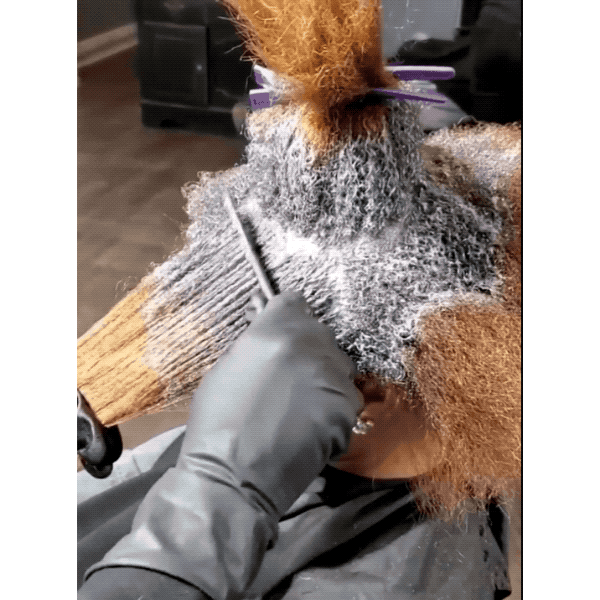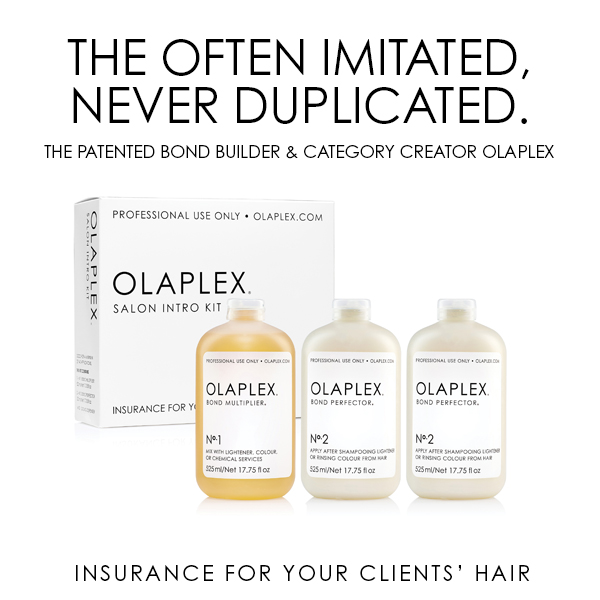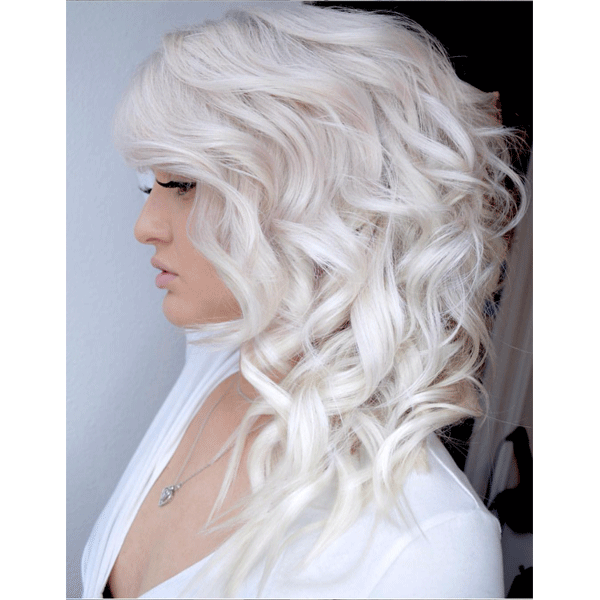Read This Before You Lighten Curly & Textured Hair!
10 Tips To Help Lighten Curly & Textured Hair
There are a lot of misconceptions around curly and textured hair, with one of the biggest being that it takes an extremely high developer to lift Level 1 to 3 hair. But the tighter the coils, the more fragile the hair. So not being knowledgeable about what makes textured hair tick—especially when detangling and during the lightening process—can lead to irreversible damage with your curly clients.
Thankfully, we reached out to colorists Leysa Carillo (@leysahairandmakeup), Joie Wallace (@joiewallacehair) and BTC Team Member Kara Williams (@haircolorkilla) to get their expert opinions on the consultation process, lifting Level 1 to 3 hair, highlight placement and more. Scroll down to get the tips!
A Thorough Consultation Is A Must
Does your client usually wear their hair curly, straight or both? Before you pick up the lightener, make sure you have a thorough consultation with your curly guest.
“If the customer wears both curly and straight hair, the color will sometimes look drastically different from one style to the next,” says Kara. “In the consultation I look for photos that might look the way their hair will be when it’s blown out to see if they still like the look. They may want to leave the salon with straight hair today, but realistically always wear it curly in real life. They need to understand what their color will look like with styling, and we need to make sure their expectations are met or set them up with realistic expectations.”
Listen To The Hair
You and your client might have high expectations for how their hair will lift, but sometimes you can’t get her as blonde as she’d like without destroying her curl pattern. “The best way to preserve the natural texture is to listen to the hair. If a client’s hair is not strong enough to be lightened I won’t do it,” says Leysa. “Even if the hair is not as light as we wanted to go my number one priority is the texture and integrity of the hair. So if the hair tells me it can’t go lighter, I rinse and adapt the plan.”
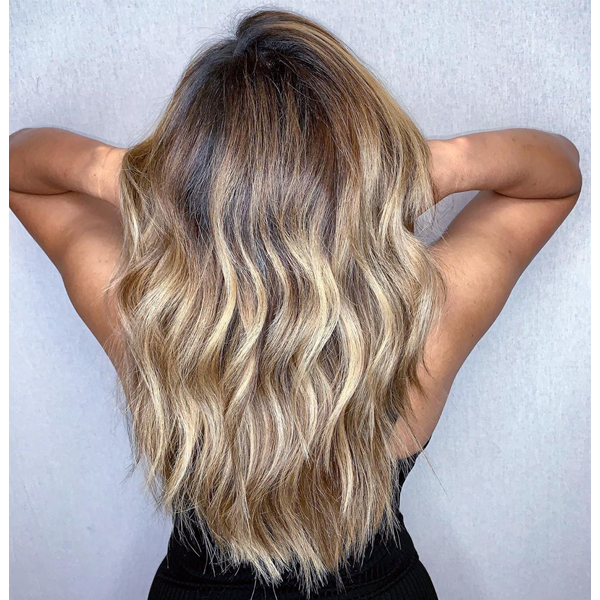
Low Volume Developers Are Best
You don’t need a high volume developer to lighten dark, textured hair. “A lot of textured hair exists in the very dark two and three levels. I rarely ever use anything higher then 20-volume on textured hair, but most often work with 10-volume. The tighter curls are usually the most fragile, and I think it’s a big misconception that kinky hair is thick, coarse and resistant. It’s actually the opposite!”
Leysa adds, “Curly hair already has a raised cuticle and is more fragile than straight hair, so it lightens quickly. I never use more than 20-volume on my curly clients”
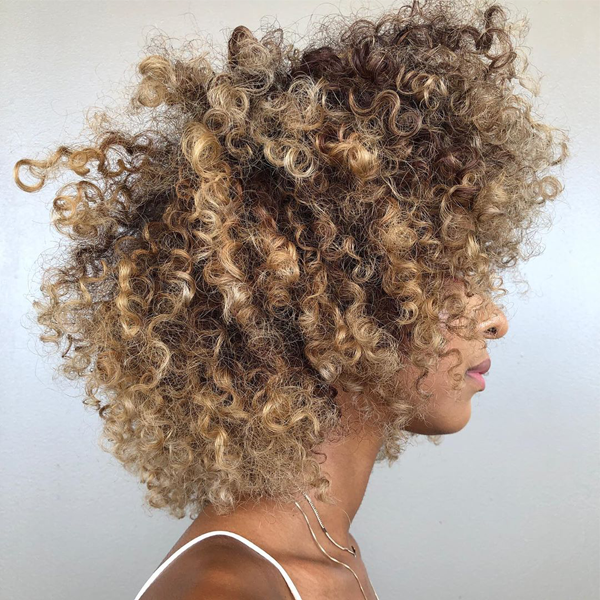
Let The Length Determine The Lightener
Not all texture is created equal, so your lightener should switch depending on the client. “Not all curl patterns are alike, so some of them will require a different lightning process. For medium to short hair, I gravitate toward cream lighteners. They keep the hair moisturized throughout the chemical lightning process and they also contain oil [which helps] to retain moisture,” says Joie. “For long hair, I use powder lighteners…I do this in conjunction with adding Olaplex No.1 to the chemical.”
There Is No One Size Fits All Application With Curls & Texture
“[Naturally curly] hair falls differently than straight hair. Curly hair ranges from wavy to extremely curly, and so every curl type needs a different design. Some curls don’t move at all so you can’t apply the same dimensional highlights as you would to free flowing hair,” says Leysa.
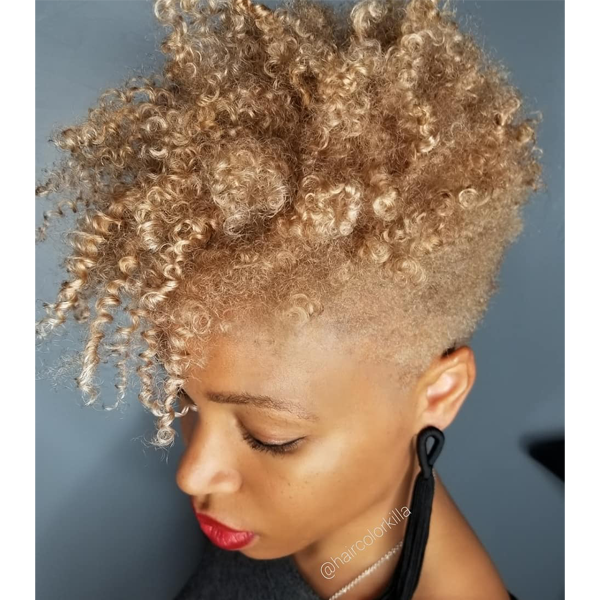
Use The Right Detangling Products
A quick tip to save you time in your chair when detangling is to use a product that provides slip, while also preparing the hair for the coloring process. “I like to use Olaplex No.2 when detangling, because it gets two jobs done at once,” remarks Leysa. “It treats the hair, while also giving slip so that I can save time for me and my clients.”
Products Used
Retouching Foils
“When retouching in foils, I love using Olaplex No.2 at the line of demarcation down to the previous blonde to help prevent the lightener from bleeding and treat the hair at the same time. Also after lightening, I use Olaplex No.2 to help rebuild the bonds of the hair when the hair has previous damage especially from heat use or old color,” says Leysa.

When Applying Highlights, More Is More
When highlighting curly and textured hair, something to remember is that it will always appear darker than straighter textures. Straight strands reflect light, while curly hair absorbs it. So when applying highlights, it’s best to add a bit more to get the desired brightness your client wants. “If a customer shows me a photo of someone whose hair looks to be 50 percent highlighted, I know I’ll need to up my placement to 75 percent highlights to get it to appear as light,” says Kara.
Always Use A Bond Builder
“After lightening, I use Olaplex No.2 to help rebuild the bonds of the hair when the hair has previous damage—especially from heat or old color,” says Leysa.
Just Go For It!
If it’s your first time coloring curly and textured hair, don’t be afraid to just go for it. Even the most experienced curl pros had to start somewhere. “[Don’t] be afraid to play. A lot of stylists are afraid of going too colorful and creative with their curly clients, and I love to do detailed and fun vivids on textured hair,” says Leysa. “Curly hair can be made rainbow, just like straight hair. All you need is creativity!”
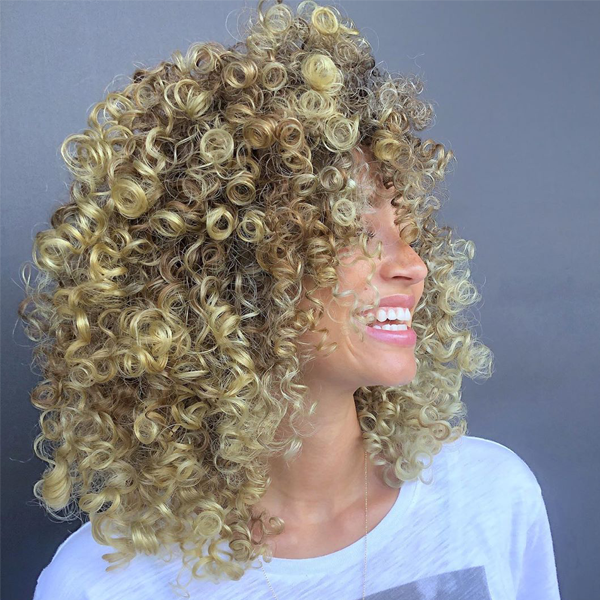
Want More Blonding Education? Click Here To Get 4 Tips For Platinum Clients!
More from
Olaplex
-
Hair Color
The Bubble Technique: 5 Tips To Create Rainbow Hair Color
-
Celebrity
The Best Beauty Looks At The 2024 Oscars
-
Celebrity
12 Questions With Celebrity Colorist, Jenna Perry
-
Haircare
3 Pre-Appointment Steps To Prepare Your Client For A Chemical Service
-
Blonde
The Biggest Hair Color Trends of 2024
-
Industry Events
OLAPLEX Announces New Brand Ambassadors
-
Monthly Product Launch List
New Year, New Hair Launches—See The Best Ones So Far!
-
Awards Shows
Simona Tabasco’s Hollywood-Inspired Glam Waves
-
Awards Shows
The Best Hair & Beauty At The 2024 Emmy Awards
-
Awards Shows
The Best Celebrity Hair Colors & Formulas From The 2024 Golden Globes
-
Curls
Curly Styling: How To Get Defined Curls With One Product
-
Leave-In
No.9 Bond Protector Nourishing Hair Serum
-
Gifts
10 Hair Gift Sets Sure To Spread Joy This Holiday Season
-
BTC Hair Trend Report
Your Guide To Fall & Winter 2023’s Hair Color Trends
-
Blowouts
Use This Trick To Keep Velcro Rollers Sanitary In The Salon
-
Manufacturer
Meet OLADUPÉ: OLAPLEX Dupes Their Own Product in Viral Campaign
-
These September Hair Launches Will Cure Your Post-Summer Blues
-
Conditioners
BLONDE ENHANCER TONING CONDITIONER
-
Facebook Lives
3 Tips For Achieving Waves (Without An Iron!)
-
News
The Hottest Hair Product Launches Of Summer 2023
-
Blowouts
Hailey Bieber’s Hairstylist Shares The Products He Won’t Style Without
-
Haircare
Volumizing Blow Dry Mist
-
Blonde
6 Blonding Techniques To Save Your Client’s Hair
-
BTC Hair Trend Report
Met Gala 2023: The Hottest Hair & Beauty Looks





